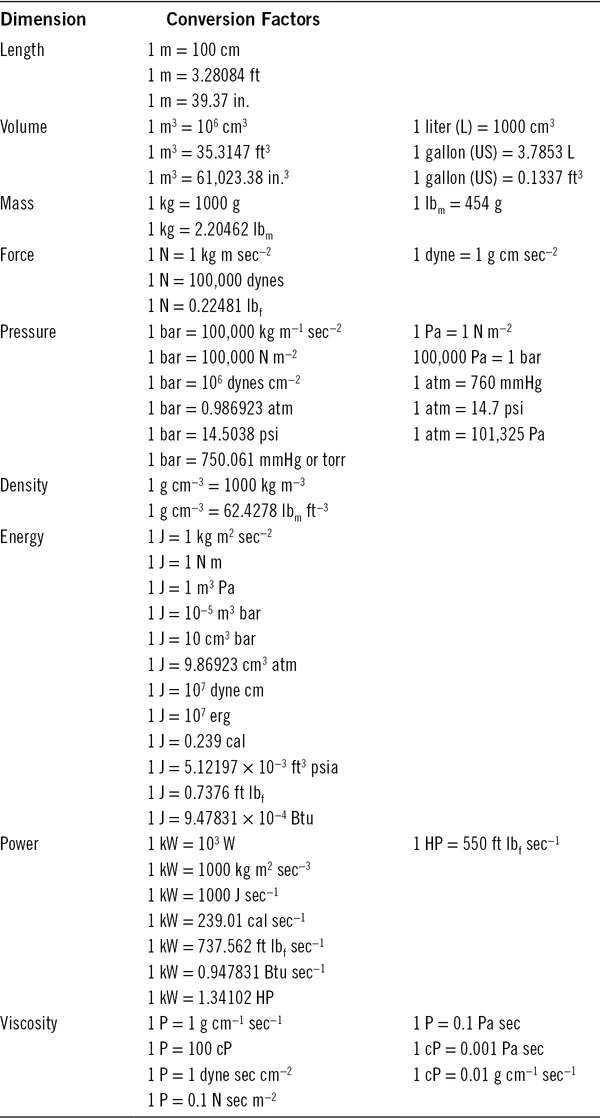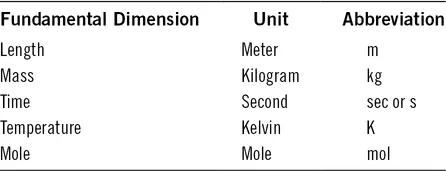
- 654 pages
- English
- ePUB (mobile friendly)
- Available on iOS & Android
eBook - ePub
Basic Transport Phenomena in Biomedical Engineering
About this book
This will be a substantial revision of a good selling text for upper division/first graduate courses in biomedical transport phenomena, offered in many departments of biomedical and chemical engineering. Each chapter will be updated accordingly, with new problems and examples incorporated where appropriate. A particular emphasis will be on new information related to tissue engineering and organ regeneration. A key new feature will be the inclusion of complete solutions within the body of the text, rather than in a separate solutions manual. Also, Matlab will be incorporated for the first time with this Fourth Edition.
Frequently asked questions
Yes, you can cancel anytime from the Subscription tab in your account settings on the Perlego website. Your subscription will stay active until the end of your current billing period. Learn how to cancel your subscription.
At the moment all of our mobile-responsive ePub books are available to download via the app. Most of our PDFs are also available to download and we're working on making the final remaining ones downloadable now. Learn more here.
Perlego offers two plans: Essential and Complete
- Essential is ideal for learners and professionals who enjoy exploring a wide range of subjects. Access the Essential Library with 800,000+ trusted titles and best-sellers across business, personal growth, and the humanities. Includes unlimited reading time and Standard Read Aloud voice.
- Complete: Perfect for advanced learners and researchers needing full, unrestricted access. Unlock 1.4M+ books across hundreds of subjects, including academic and specialized titles. The Complete Plan also includes advanced features like Premium Read Aloud and Research Assistant.
We are an online textbook subscription service, where you can get access to an entire online library for less than the price of a single book per month. With over 1 million books across 1000+ topics, we’ve got you covered! Learn more here.
Look out for the read-aloud symbol on your next book to see if you can listen to it. The read-aloud tool reads text aloud for you, highlighting the text as it is being read. You can pause it, speed it up and slow it down. Learn more here.
Yes! You can use the Perlego app on both iOS or Android devices to read anytime, anywhere — even offline. Perfect for commutes or when you’re on the go.
Please note we cannot support devices running on iOS 13 and Android 7 or earlier. Learn more about using the app.
Please note we cannot support devices running on iOS 13 and Android 7 or earlier. Learn more about using the app.
Yes, you can access Basic Transport Phenomena in Biomedical Engineering by Ronald L. Fournier in PDF and/or ePUB format, as well as other popular books in Medicine & Biotechnology in Medicine. We have over one million books available in our catalogue for you to explore.
Information
Topic
MedicineSubtopic
Biotechnology in MedicineChapter 1Introduction
Before we can begin our study of biomedical engineering transport phenomena, let us first review some basic concepts that are essential for understanding the material in this book. You may have come across some of this material in other courses such as in chemistry, physics, and perhaps thermodynamics. Reviewing these concepts once again is still very important since these concepts form the basis of our approach to analyzing and solving biomedical engineering problems.
1.1Review of units and dimensions
1.1.1Units
Careful attention must be given to units and dimensions when solving engineering problems; otherwise, serious errors can occur in your calculations.
Units are how we describe the size or amount of a dimension. For example, a second is a common unit that is used for the dimension of time. In this book, we use primarily the International System of Units, which is also known by its abbreviation SI, for Système international d'unités. Other systems of units are also used, such as the English and American engineering systems and the centimeter-gram-second (cgs) system. We will come across some of these non-SI units as well in our study. The units of these other systems may be related to the SI units by appropriate conversion factors. Table 1.1 provides a convenient summary of common conversion factors that relate these other units to the SI system.
Table 1.1 Conversion Factors

It is important to remember that in engineering calculations you must always attach units to the numbers that arise in your calculations, unless they are already unitless. Furthermore, within a calculation, it is important to use a consistent system of units, and in this book we recommend that you work with the SI system. In the event that a number has a non-SI unit, you will first need to convert those units into SI units using the conversion factors found in Table 1.1. Also, remember to treat the units associated with a number as algebraic symbols. Then, as long as the units are the same, you can perform operations such as addition, subtraction, multiplication, and division on the like units, thereby combining and, in some cases, even cancelling them out.
1.1.2Fundamental dimensions
The measurement of the physical properties we are interested in are derived from the fundamental dimensions of length, mass, time, temperature, and mole. Table 1.2 summarizes the basic SI units for these fundamental dimensions. The SI unit for length is the meter (m) and that for time is the second (sec).
Table 1.2 SI Units for the Fundamental Dimensions

1.1.2.1Mass and weight
The mass of an object refers to the total amount of material that is in the object. The mass is a property of matter and is the same no matter where the object is located. For example, the mass of an object is the same on Earth, on Neptune, or if it is just floating along somewhere in space. In SI units we measure the mass of an object in kilograms (kg). Remember that the mass of an object is different than the weight of an object. Weight is the forc...
Table of contents
- Cover
- Halftitle Page
- Title Page
- Copyright Page
- Dedication Page
- Contents
- Preface
- Notation
- Author
- 1 Introduction
- 2 A review of thermodynamic concepts
- 3 Physical properties of the body fluids and the cell membrane
- 4 The physical and flow properties of blood and other fluids
- 5 Mass transfer fundamentals
- 6 Mass transfer in heterogeneous materials
- 7 Oxygen transport in biological systems
- 8 Pharmacokinetic analysis
- 9 Extracorporeal devices
- 10 Tissue engineering and regenerative medicine
- 11 Bioartificial organs
- References
- Index